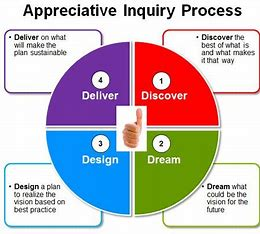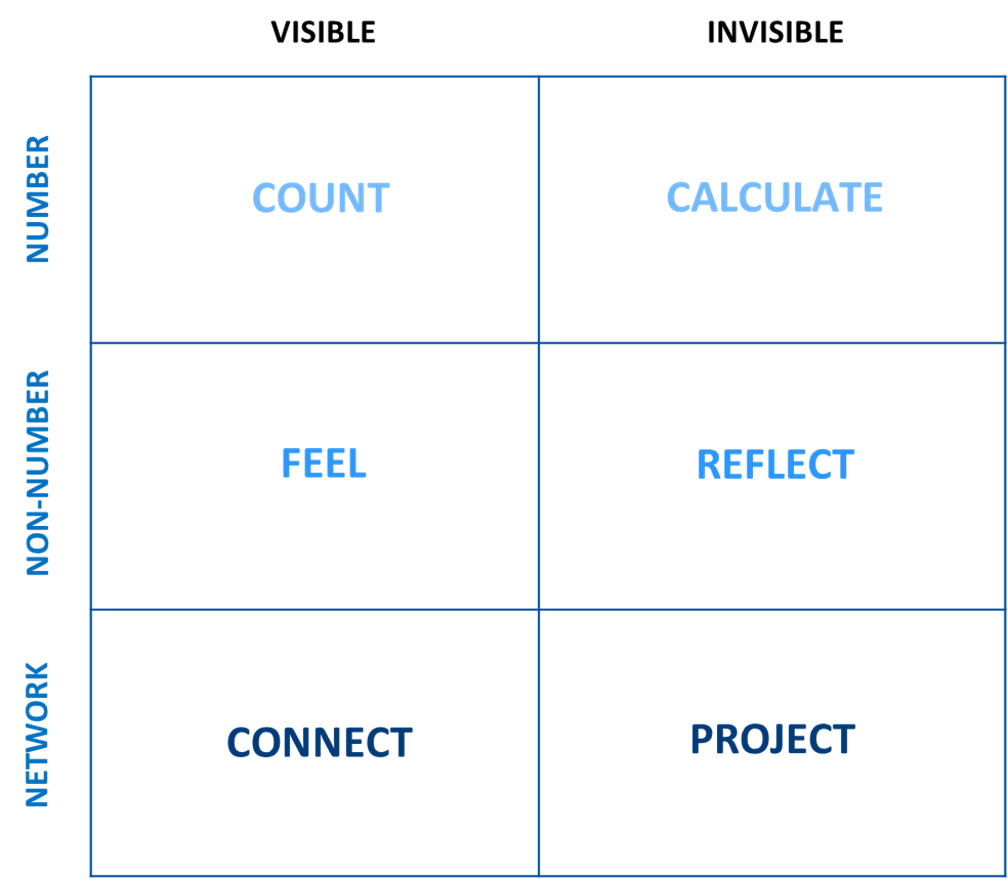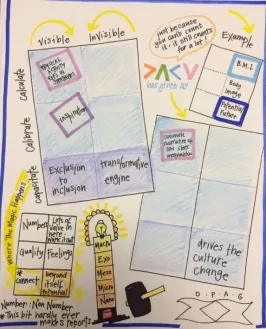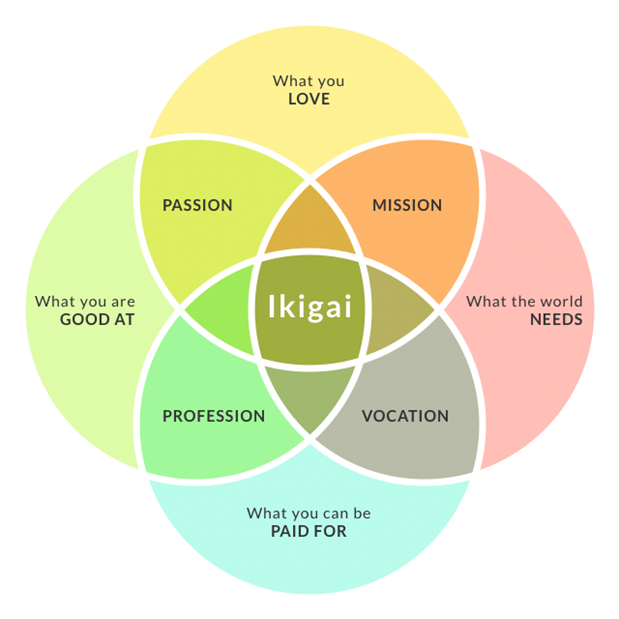Over the years we have tested, practiced, and used a range of tools to help us think, learn, plan, reflect and capture value and impact. There are some that have come and gone, and there are some that have stuck. I have been reflecting on the ones that have stuck and thinking about why. I think there are a few simple characteristics that they share, which means they are still in our mental and physical kit bags!
- Simple and easy to think about and use.
- Evidence based AND have practical application in the real world.
- Offer easy to understand language and questions.
- Can be used on our own, in teams and in groups.
- Can be done quickly.
- Can be fun!
- Unlock new thinking.
- Are transformative for our practice and impact.
Here are a few of our team’s and my personal favourites. I’d love to know what you enjoy using and why.
- To look back and learn:
Use journey and ripple mapping
If I need to reflect on a journey/process, remind myself of milestones, events, moments of change and friction and make sense of what has happened and what I can learn from it, I increasingly use a backwards looking journey mapping process.

This example is a reflection of my personal journey in GM Moving and the ongoing challenge to measure what really matters. It started out as a scribbled document on a train which I redrew and used in a workshop recently.
Why was the process useful? Because it helped me to step back and think from a distance. It helped me to remember and identify key moments or particular periods and feelings of friction, challenge, tension and dissonance (red). It also helped me notice how far we have come, what feels different now, the things that have helped us along the way (blue).
So, what? Understanding the journey so far, making events, feelings, challenges and enablers visible and explicit for myself and others has helped me to think about where next. It has also resonated with many others and helped them to think about their own journeys and where next.
We used Appreciative Enquiry a lot in my early work in GM Moving. It’s something I’ve been reminded of recently and will start to use more again. We should never stop dreaming!
It’s a brilliant tool which can be used in loads of different ways. I have workshopped with it in rooms of 100 people, and I have used it in one to one conversations. If someone can direct me to the best description of it and the process, I would be grateful. In the meantime, here’s the wiki page!

Use Rolfe’s What? So, What? Now, What? questions

Our evidence and evaluation leads have worked hard to develop simple reflective practice and sensemaking processes that help me to reflect on my own, with others and for us as a whole organisation about an event, process, time period, activity or project.
These kind of questions are gold to me and they are becoming more embedded in my natural everyday thinking processes. This has moved from being a evaluation method to a natural way of thinking. They are based on Rolfe’s work (2001) and are widely used. Our team use them for personal and collective monthly logs and we then engage in collective sensemaking using some of the other tools mentioned here (e.g. enablers of change). The table below shows my current personal log headings and questions, very slightly adapted for my own preferences.

2. Understanding and capturing value
If I want to understand and/or capture the value of a process, event, project, I like to use the 6 Box Revaluation tool, described in a blog here.
What I love about the six box exercise is that it can be done on my own, as I listen to people tell the story of their work. It can be done as a group activity, with flip charts and post it notes.

It’s about storytelling from each of our perspectives, noticing what we noticed and it’s a beautiful blend of ‘hard’ data and evidence, sensing, feeling and reflective practice. It is also forward looking, helping us to envision the future transformative potential of relationships and connections that are being created. It’s a brilliant way to help people think about the tangible and the intangible change. It simply asks…
- What can you count? Or what ‘could’ be counted that you’d need to find a way to calculate or work out?
- What can you see, hear, feel and touch?
- What connections are being made? What relationships are being developed? And what do you sense/know about the transformational potential of these connections and relationships in the future?
The approach also distinguishes between what is visible and invisible, which is so important.

Examples: Most recently, we used this method to capture the value and impact of the GM Moving conference. It was fun, revealing and could be done with celebratory chocolates in hand. I have also used it recently to help people step back and see the value of their own work (when supporting another organisation’s board away day). As I listened to a range of local and national contributors to the Pivot work in Greater Manchester, I used it to help me capture the value of their work, which I am now turning into a blog.
3. Looking forward and planning
At my best, when I want to look forward and plan, I start by looking back first! Then, I take the learnings and reflections from journey mapping, ripple Mapping, the six box value and/or the What? So, what? thinking… then use one of the following processes:
- Now, What? At this point, Rolfe’s questions above, might help me to think about what I need to do next, or what I need to think or be next.
- A theory of change process, such as this one which our Children and Young People have developed for their work.

3. Understanding influences and drivers of change
If I want to understand what is influencing something, I like to use our adapted version of the socio ecological model. It helps us to think about all the influences on behaviour at scale or at an individual, family, team or community level. I have used this in many and varied situations over recent years and it is always a valuable conversation and process.
We can ask questions like this to help us think and understand:
- What are the ……. Influences?
- What is in our sphere of control or influence to change?
- How?
- What might help?
- What might get in the way?
- Who can influence the things that we don’t have control over?
- How can we support that process?

A brilliant example of how this model can be used as a design and thinking tool is the Right to the Streets work, led by Eve Holt. She developed the whole approach around this model and you can see how it translated into action and change in the final report.
The enablers for change have been born out of our work in Greater Manchester, thanks to the embedded researchers and the realist evaluation approach of the Substance Consortia with Sheffield Hallam University. We use these all the time in our work and they continue to be useful in new and varied ways.

There is a rich and deep body of research, data and evidence that sit underneath these, which you can explore here.
Again, at their simplest they can be used as a set of questions to look back, take stock of the current position, and/or think about what needs to happen next. It’s a great way to organise our thinking and ensure that our approach is evidence based. Here are some examples of questions we could use. We have questions like this for all five enablers of change:
Involving local people and growing assets: To what extent are local people currently involved in influencing, designing, or implementing solutions to enable active lives? What more could you do to work with local people in your local area on an ongoing basis? What would help this/get in the way of this?
Strategic leadership enabling collective leadership: To what extent is strategic leadership enabling distributed leadership to enable active lives? What more could you do/could change to ensure greater strategic leadership (belief or agency), or to enable wider and more diverse collective leadership?
Effective work across and between sectors: To what extent have you built trust and strong relationships across sectors? To what extent are there effective partnership(s) with a common agenda aligned to the mission?
Transforming governance and processes: What are the governance and administrative processes that are helping or hindering progress? What have you had to work around? How have you managed it and what have you learnt? What is still in the way? What is in your sphere of control of influence here? What system, process or governance changes would enable greater change and impact?
Learning and adapting: What processes are in place (or can you develop) to critically reflect, learn and adapt to better enable active lives? How are you bringing in insight, data and best practice from elsewhere to support your ongoing practice?

In reflecting on those enablers for change above, and in using many of these tools in fact, we need to be clear about what is in our sphere of concern, control and influence. We have limited time, capacity, resource, energy and will. There is a perennial question about whether we ‘go where the energy is’ or keep banging our heads against brick walls. When 90% of the doors are open, how much time do we spend searching for a key to those that are locked?
This diagram (again, turned into a set of questions) helps us to reflect on:
- The things we are concerned about that are getting in the way of change.
- The things we or others around us can influence.
- The things are have direct control over and can crack on with.
This isn’t about being defeatist, and we may need colleagues, coaches, mentors or our children (in my case), to challenge our beliefs and assumptions about where we draw these circles. For example, I might assume I have no influence or control over national government policy or what goes on in board rooms or government circles. But there are many and varied ways that we can all influence bottom-up, so let’s name the enablers and barriers to change, then use this diagram to help us reflect on which levers we and others can pull.

Getting below the surface. Another model I have been introduced to in recent years is the iceberg model. This is brilliant for thinking about, naming and making explicit the things that are going on beneath the surface. This is so needed and powerful. It has given me a sense of permission, and the language to ask different questions, to help get to the root cause of where culture, systems, processes or people might be stuck. I use it as a personal tool to check my own thoughts, feelings, behaviours and actions. I use it in coaching and mentoring and I use it in group work when planning projects and approaches to the work. It is brilliant.

The questions on the slide are good in some contexts. In reflective practice or coaching I turn them into questions like:
- What assumptions am I making?
- What are my beliefs about this (that might be getting in the way)?
- What systems, processes or rules might be getting in the way?
- What behaviours or attitudes are at play?
Then how might all those things be showing up in the patterns, trends, events and outcomes?
This model works brilliantly alongside Immunity to Change (Lahey and Keegan). It helps to unlock ‘stuckness’ at an individual and group level. The book has brilliant tools in, and this video helps to walk you through the process.

4. Understanding my role and contribution or helping others’ to understand theirs (past, present or future).
One of my all time favourite tools is this one. I was introduced to it by Rene Barrett in a personal resilience workshop in 2017. It has changed my life and many others lives too. Again, it can be turned into a brilliant set of questions to help me and others think back, think about now, and think about the future. It can be used as a self assessment tool and a planning tool. For example, if I ask myself these questions about my current role and contribution:
- On a scale of 1-10 how much is my current role made up of what I love, what the world needs, what I am good and and what I can have a paid role to do… then I end up with 4 ‘scores’.
- Then I can ask myself: “what would need to change to make that 5 a 6?” or what might I do differently, more of, less off to dial up those scores in all areas?
Why does our ikigai matter in the context of this blog? Because we do our BEST work and make our most valuable contribution when we are in that sweet spot in the middle!
